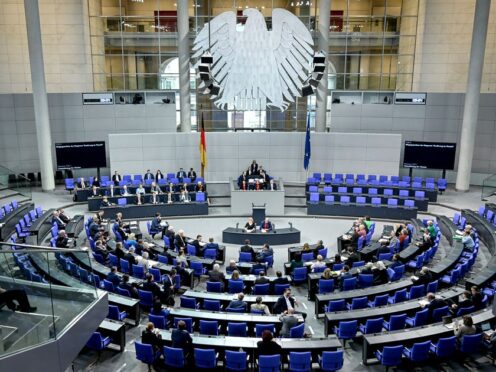German lawmakers have rejected a new call by the opposition for the government to send Taurus long-range cruise missiles to Ukraine, a day after Chancellor Olaf Scholz defended his refusal to supply the weapons.
The main centre-right opposition bloc has sought to keep up pressure on the issue and exploit divisions in Mr Scholz’s unpopular three-party coalition, even as the German leader tries to put a lid on the debate.
On Wednesday, he told lawmakers that prudence was a virtue and rejected suggestions that he did not trust Kyiv.
Parliament’s lower house, or Bundestag, rejected the opposition Union bloc’s motion by 495 votes to 190, with five abstentions.

Germany has become the second-biggest supplier of military aid to Ukraine after the United States, but Mr Scholz has stalled for months on Ukraine’s desire for Taurus missiles, which have a range of up to 310 miles (500km) and could in theory be used against targets far into Russian territory.
His position has frustrated the conservative opposition and parts of Mr Scholz’s own coalition.
The criticism did not diminish after Mr Scholz finally offered a detailed explanation last month, pointing to his insistence that Germany must not become directly involved in the war.
Lawmakers last month urged the government to deliver further long-range weapons to Ukraine but voted down a previous opposition call explicitly urging it to send Taurus missiles.
Critics reject Mr Scholz’s argument that Taurus missiles could only be used responsibly with the involvement of German soldiers, whether inside or outside Ukraine. That, he said Wednesday, is “a line that I as chancellor do not want to cross”.
The “supposed prudence has always only fuelled (Russian President Vladimir) Putin in his aggression against Ukraine — that is the result,” opposition lawmaker Johann Wadephul told lawmakers.
“He will only retreat if he is only forced to. Either we enable Ukraine to win the war or we will lose with it. There is no third way.”
Rolf Mutzenich, who leads the parliamentary group of Mr Scholz’s Social Democrats, suggested that the debate was being driven by domestic political motives.
“Germany is the country that, after the United States, does most for Ukraine,” he said.
A senior lawmaker with the Greens, one of Mr Scholz’s junior coalition partners, made clear that her party continued to back sending Taurus missiles but rejected what she called “shop-window motions” by the opposition.
Agnieszka Brugger noted that any decision could only be made by senior ministers.
But she said that “hesitation and procrastination also can ultimately contribute to escalation” and rejected Mr Scholz’s attempts to shut down the debate.
She said that France and Britain had sent similar missiles and that had not meant a further escalation.
